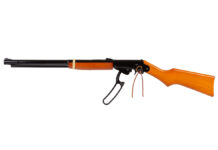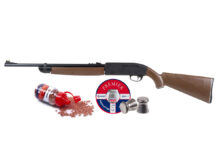Few things are more frustrating than sitting in a cold duck blind all day and having no ducks show up. Just because you have water, it doesn’t mean you will also have ducks. You know you can bring deer and bear into a location of your choosing by creating food plots or bait sites for them, but have you ever considered doing the same for waterfowl? Actually, it’s something every cold and weary duck hunter has contemplated. It may not be as simple as throwing birdseed on the water, but attracting ducks may not be as difficult as it seems.
Wild ducks are looking for more than just a water source when they stage. There are several factors at play on and under the surface of those ponds. Flight is the most energetically expensive method of locomotion, and ducks move very long distances during migration. In light of this, it makes sense that ducks are pretty focused on food and are always scrounging for a snack. By learning about the best foods for ducks, you can learn to predict sites where specific ducks may congregate, or enhance your property to bring the ducks to you.

Table of Contents
Duck Diet Basics
It may surprise you to learn that ducks are omnivorous, meaning they eat both plants and animals. Depending on the duck, they consume an impressive variety of foods: earthworms, snails, slugs, mollusks, small fish, fish eggs, small crustaceans, grass, herbaceous plants, leaves, aquatic plants (green parts and the roots), algae, amphibians (tadpoles, frogs, salamanders, etc.), insects, seeds, grains, berries and nuts. The nutritional value of each of these keeps both wild ducks and their ducklings healthy. Without question, a varied diet helps ensure ducks get the nutrition they need to support healthy growth and development and sustain them through long migrations.
Another critical component to a wild duck’s diet is grit (sand, small pebbles, shells), which helps break down food in their crop and may provide essential minerals like calcium. Even ducklings need grit in their diet to break down food. The more nutritional value your food plots provide, the better.
A number of factors help narrow down the smorgasbord if you’re looking to track down or attract a specific species:
- Species: Some ducks have evolved to eat more specialized diets. Bill shape is a good indicator of diet. For example, narrow, serrated bills are efficient at grabbing fish while broad, rounded bills are great for digging up aquatic insects and algae.
- Season: Opportunistic eaters will take advantage of whatever food source is most plentiful during a particular time of year.
- Habitat, range and feeding style: It may seem like an obvious point to say that ducks that hang out preferentially in fields and meadows will eat more grains than fish, but keep in mind that a duck’s habitat may change along its migratory route. A duck that is gorging on grain today may be munching minnows next week, so you need to know what that particular species will be looking for in your neck of the woods. Pay attention to the feeding style of your target. Despite both being aquatically inclined, dabbling ducks will eat different things than deep-diving ducks simply because of how they search for food.
Aquatic Appetites
Of all the natural duck foodstuffs, aquatic plants may be the best place to focus your enhancement efforts. Feeding ducks will eat various kinds of aquatic vegetation – submerged and emergent, native and invasive – representing more than 25 different families. Examples include wild rice, wild celery, coontail, milfoil (including invasive Eurasian milfoil), pondweed, southern naiad and widgeon grass. According to Dr. Thomas E. Moorman, “Gadwalls and American wigeons relish the leafy portions of aquatic vegetation. Green-winged teal, northern pintails and mallards prefer the seeds produced by wetland plants. Canvasbacks, redheads and scaup feed heavily on roots and tubers, while ring-necked ducks consume more leafy plant material and seeds.”
Maximizing the diversity of aquatic plant species and growth forms in your duck pond is a good strategy for attracting a variety of waterfowl. If you are struggling to find specific information for your area about what plant species will attract which ducks, take a trip to a spot you know hosts migrating ducks and bring a plant identification guide. You can either take your species list to your local greenhouse and pond supply store or carefully and respectfully harvest wild specimens for transplanting (if it’s legal to do so).
Millet Time

Millet is an excellent attractant for ducks. Golden and Japanese varieties have been developed to grow quickly and prolifically in a variety of conditions – far more cheaply than corn – making them very popular with folks trying to establish duck food plots. With two or even three crops in a season, millet will self-seed and provide forage for ducks for an extended period.
Millet is best planted about 75 days before the first frost date in your area. Millet seed can be sown in prepared soil adjacent to a pond using a variety of methods (broadcast, drilling, fly-on) and will do well with minimal care as long as the young plants aren’t flooded too early in their development. Make sure you’re not planting before a big rain hits or you may be planting again later.
Good Grains
For grain supply, consider planting wild rice (zizania aquatica). This native North American aquatic grain is an annual, but should self-seed once established. Wild rice is very good at improving water quality and clarity so consider planting it if your pond needs a bit of a boost.
Wild rice is best planted in the fall as its germination is dependent on overwintering in the sediment layer of a pond or stream. Plant your seeds immediately after purchase. Seeds that dry out will not germinate. If all goes well, you will start to see young plants growing underwater in May. Wild rice reaches maturity in September and will be two to eight feet above the water line.
Planting Tips for Standing Water
The Conservation Commission of the State of Missouri offers the following tips for planting aquatic vegetation:
- Space approximately three to four feet apart in rows to allow for growth. The more sunlight, the better.
- Place submerged and floating-leaved plants along the 3- to 4-foot depth contour of the pond.
- Place emergent plants near the shore from the waterline out to depths of six to 12 inches.
- Do not place floating plants next to submerged plants so adequate light can reach young submerged plants.
Native Plants for Your Duck Pond
The best native plant species for your duck pond will depend largely on your geographic area. Some good picks to start your site-specific research with include:
- Wild rice
- Pondweeds
- Milfoils
- Smartweed
- Wild Celery
- Duckweed
- Coontail
No matter where you are, some common factors will influence how well your plants grow: water quality and clarity, salinity, water and sediment depth, wave and current energy. Keep these factors in mind when researching what species to try out in your pond.
Enhancing Native Food Sources
 If you’re looking to enhance a natural area that is already providing native food sources for wild ducks, diversity is key. It’s time to be inclusive of all types of waterfowl. When a variety of waterfowl is using your waterways, you have a variety of waterfowl in the freezer. In some cases, it can extend your season.
If you’re looking to enhance a natural area that is already providing native food sources for wild ducks, diversity is key. It’s time to be inclusive of all types of waterfowl. When a variety of waterfowl is using your waterways, you have a variety of waterfowl in the freezer. In some cases, it can extend your season.
If you have a field, add a pond. If you have a pond, clear an area for field-based foods. Within the pond itself, try to enhance or create both marshy and open water environments.
It pays to have a way to draw the water level down. During the spring and summer months, you can lower water levels to promote the growth of plants and food sources. You can also keep water levels low for ducks like pintails, mallards, teal and wigeon. It doesn’t take much to accomplish this, and it can be as easy as a pipe with a valve.
Plant an array of species to help ensure you always have something beneficial growing. Plant pondweeds and wild celery in the deepest areas of your pond, smartweed and wild rice in the mid-depths and millet and corn in the shallows. A healthy diversity of plant species should attract and support a healthy faunal diversity without further assistance from you.
Diversity in habitats and species will ensure you have the best foods for ducks available for your feathered friends no matter what Mother Nature throws at you.
Acorns
Of course, an article on duck diet would not be complete without mentioning the outliers. Wood ducks love acorns. Yes, acorns – preferably white oak species (oaks with rounded, lobed leaves) over red oak species (pointed-lobed leaves) for palatability and digestibility reasons. So, if wood ducks are something you’d like to see more of on your property, oak trees are excellent additions to throw into the mix.
In areas where you have a good source of acorns, you generally have a beaver problem as well. You may need to protect young trees with wire net beaver exclosures. When it comes to wood ducks, acorns and pecans are often the only food source you have. Protecting oak and pecan trees from beavers is all the more important.
Great Expectations
Deer and bear hunters create food plots they know will attract a big buck or giant boar. With the information we discussed and a little elbow grease, you can consistently attract waterfowl to your waters. In the long run, creating food sources for waterfowl is more than just feeding ducks. It’s not only creating a habitat for wild ducks but a critical habitat for other wildlife as well. Besides, you are probably tired of sitting in a freezing cold duck blind hoping for the best. It’s time to quit hoping and time to start shooting.











































